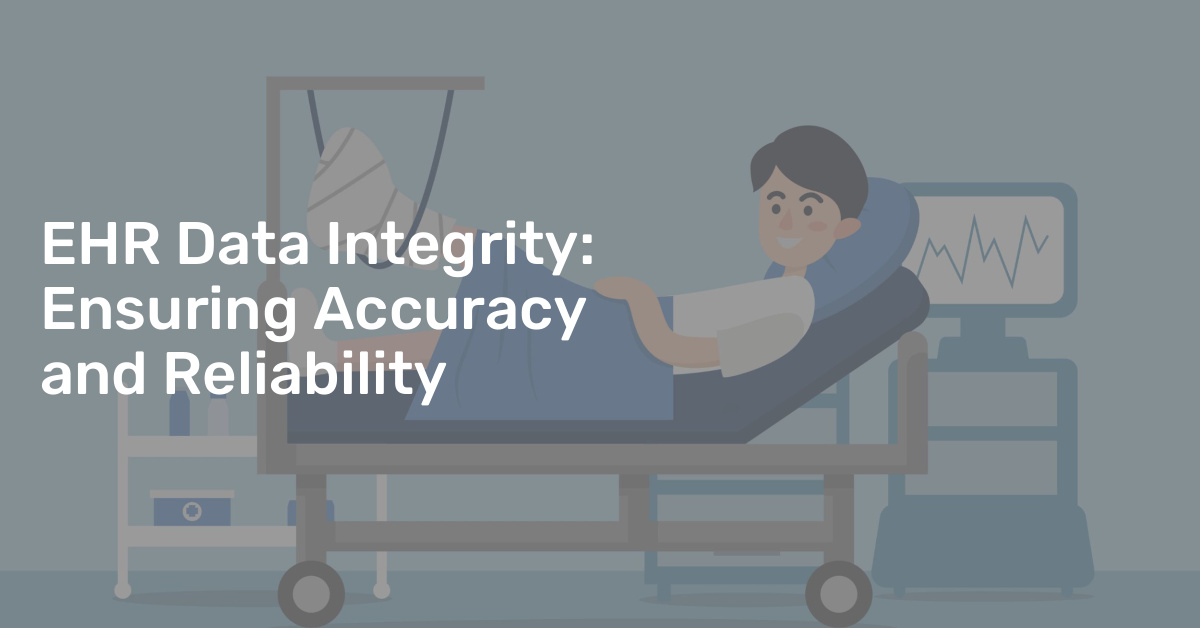Successfully Transferred: Ensuring Data Integrity During Migration

Table of Contents
Planning Your Data Migration for Integrity
Before you even begin moving data, meticulous planning is crucial for a successful data migration. This stage sets the foundation for data integrity and minimizes the risk of errors. Ignoring this critical step can lead to significant problems down the line, impacting both the efficiency and the accuracy of your data transfer.
Comprehensive Data Assessment: The Foundation of Success
A thorough data assessment is paramount before initiating any data migration project. This involves a detailed analysis of your existing data landscape to understand its volume, structure, and complexities. Without this understanding, you're essentially navigating in the dark.
- Identify data sources and their formats: Pinpoint all locations where your data resides, whether it's databases, spreadsheets, cloud storage, or legacy systems. Understand the specific format of each data source (e.g., CSV, XML, SQL).
- Analyze data quality (completeness, accuracy, consistency): This involves identifying and addressing issues such as missing values, inconsistent formatting, and duplicated entries. Poor data quality can significantly impact the accuracy of your migrated data. Tools for data profiling and quality assessment can be invaluable here.
- Document data relationships and dependencies: Understand how different datasets relate to each other. This is crucial for ensuring that data dependencies are maintained during the migration. Clearly documenting these relationships helps prevent data inconsistencies or breakage post-migration.
- Determine the target environment and its requirements: Know the specifications of your target system (e.g., database type, storage capacity, operating system). Ensure compatibility between your source and target systems to avoid data loss or corruption.
Choosing the Right Migration Methodology: Minimizing Risk and Downtime
Selecting the appropriate migration methodology is vital for data integrity. The chosen method must align with your business needs, risk tolerance, and the complexity of your data.
- Big Bang migration: This involves a complete cutover to the new system in a short timeframe. It's a high-risk approach but can be faster. This method is suitable for smaller datasets and organizations with lower risk tolerance.
- Phased migration: Data is migrated in stages, reducing disruption to ongoing operations. This is a lower-risk approach but takes longer. This is ideal for larger datasets and complex systems where minimizing downtime is crucial.
- Parallel run: This involves running both the old and new systems concurrently for a defined period. This reduces risk but increases complexity and cost. This allows for a thorough validation of data before fully decommissioning the old system.
Defining Clear Data Integrity Rules and Validation: Setting the Standard for Accuracy
Establishing clear data integrity rules and validation criteria ensures consistency and accuracy throughout the migration process. This is your checklist for success.
- Define acceptable data loss limits (e.g., zero tolerance for critical data): Set clear expectations for acceptable data loss. For mission-critical data, a zero-tolerance policy is often necessary.
- Specify data validation checks (e.g., checksums, data comparisons): Implement mechanisms to verify data integrity at each stage of the migration. Checksums provide a way to confirm that data hasn't been altered during transfer.
- Establish rollback procedures in case of errors: Have a plan in place to revert to the original data in case of errors or unforeseen problems. This minimizes the impact of potential failures.
Implementing Robust Data Migration Techniques
The implementation phase is where the detailed planning translates into action. Using the right tools and techniques is key to preserving data integrity during the transfer.
Employing Secure Data Transfer Methods: Protecting Data in Transit
Protecting your data during the transfer process is paramount. Employing secure methods is critical for preventing unauthorized access or data corruption.
- Utilize Secure File Transfer Protocol (SFTP): SFTP encrypts data during transmission, protecting it from interception.
- Encrypt data at rest and in transit using industry-standard encryption: Employ strong encryption algorithms to safeguard data both while it's being transferred and stored.
- Implement access controls to limit unauthorized access: Restrict access to your data only to authorized personnel, using appropriate authentication and authorization mechanisms.
Utilizing Data Transformation and Cleansing Tools: Ensuring Data Quality
Data rarely migrates seamlessly. Transformation and cleansing are necessary steps to address inconsistencies and ensure accuracy.
- Employ ETL (Extract, Transform, Load) processes: ETL tools facilitate the extraction of data from various sources, its transformation into a consistent format, and its loading into the target system.
- Use data cleansing tools to standardize data formats and remove duplicates: These tools help to clean and prepare the data for migration, resolving inconsistencies and eliminating duplicates.
- Validate data at each stage of the transformation process: Regular checks during transformation help prevent errors from propagating throughout the migration.
Implementing Comprehensive Data Validation and Reconciliation: Verifying Accuracy Post-Migration
After the data has been migrated, it's crucial to verify its accuracy and completeness.
- Perform checksum comparisons to ensure data integrity: Checksums provide a way to verify that data hasn't been corrupted during transfer.
- Compare data counts before and after migration: Verify that the number of records in the source and target systems match.
- Reconcile data with the source system: Cross-reference the migrated data with the original data to identify any discrepancies.
Monitoring and Post-Migration Activities
Even after the migration is complete, ongoing monitoring and maintenance are critical for long-term data integrity.
Continuous Monitoring of the New System: Proactive Issue Detection
Post-migration monitoring is essential to identify and address any potential data quality issues.
- Establish monitoring dashboards to track key metrics: Set up dashboards to track key performance indicators (KPIs) related to data quality and system performance.
- Implement alerts for critical errors or data anomalies: Automated alerts allow for timely intervention in case of problems.
- Regularly review data quality reports: Regularly assess data quality reports to identify and address any ongoing issues.
Data Backup and Disaster Recovery Planning: Protecting Against Data Loss
Having a solid backup and recovery plan is essential to protect against unexpected data loss.
- Create regular backups of migrated data: Regular backups ensure data protection in case of system failures or other unforeseen events.
- Implement a robust disaster recovery plan: A comprehensive disaster recovery plan should detail procedures for restoring data and systems in case of a disaster.
- Test the backup and recovery processes regularly: Regular testing ensures the effectiveness of your backup and recovery procedures.
Post-Migration Audit and Documentation: Learning from the Experience
Thorough documentation is critical for future reference and for learning from the experience.
- Create a comprehensive audit trail: Keep a detailed record of all actions performed during the migration process.
- Document any issues encountered and their resolutions: Document any problems encountered and the steps taken to address them.
- Maintain updated documentation of the migration process: Keep your documentation up-to-date to serve as a reference for future migrations.
Conclusion
Successfully transferring data during a migration requires meticulous planning, robust techniques, and ongoing monitoring. By following the strategies outlined above—from comprehensive data assessment and the selection of appropriate migration methodologies to the implementation of rigorous validation and post-migration checks—organizations can significantly reduce the risks associated with data loss or corruption. Remember that a successful data migration is not just about moving data; it's about ensuring its integrity remains intact throughout the entire process. Don't hesitate to consult with data migration experts to ensure your data migration is successfully transferred and your data remains safe.

Featured Posts
-
 Second Us Navy Jet Lost At Sea Another Aircraft Down From Truman Carrier
May 08, 2025
Second Us Navy Jet Lost At Sea Another Aircraft Down From Truman Carrier
May 08, 2025 -
 Ripples Xrp Can It Overcome Resistance And Reach 3 40
May 08, 2025
Ripples Xrp Can It Overcome Resistance And Reach 3 40
May 08, 2025 -
 Are Ps 5 Pro Sales Disappointing Compared To The Ps 4 Pro
May 08, 2025
Are Ps 5 Pro Sales Disappointing Compared To The Ps 4 Pro
May 08, 2025 -
 Bank Of England Is A Half Point Interest Rate Cut The Right Move
May 08, 2025
Bank Of England Is A Half Point Interest Rate Cut The Right Move
May 08, 2025 -
 Verify Your Details Dwp Message About 12 Benefits And Bank Accounts
May 08, 2025
Verify Your Details Dwp Message About 12 Benefits And Bank Accounts
May 08, 2025
Latest Posts
-
 Anchorage Protests Against Trump Policies Continue Thousands Participate
May 09, 2025
Anchorage Protests Against Trump Policies Continue Thousands Participate
May 09, 2025 -
 New Funding For Community Colleges To Fight Nursing Staff Shortages 56 M
May 09, 2025
New Funding For Community Colleges To Fight Nursing Staff Shortages 56 M
May 09, 2025 -
 Second Week Of Anti Trump Protests In Anchorage Draws Thousands
May 09, 2025
Second Week Of Anti Trump Protests In Anchorage Draws Thousands
May 09, 2025 -
 56 Million Boost For Community Colleges To Combat Nursing Shortage
May 09, 2025
56 Million Boost For Community Colleges To Combat Nursing Shortage
May 09, 2025 -
 Anchorage Witnesses Second Anti Trump Protest In Two Weeks
May 09, 2025
Anchorage Witnesses Second Anti Trump Protest In Two Weeks
May 09, 2025
